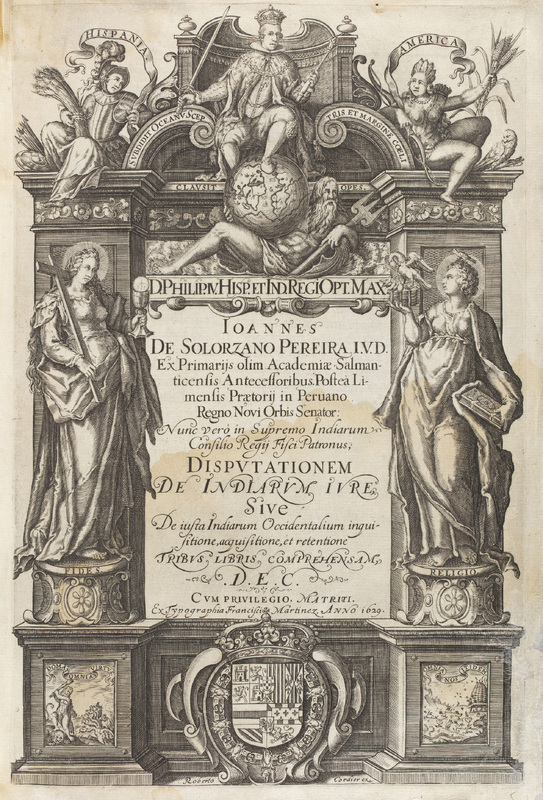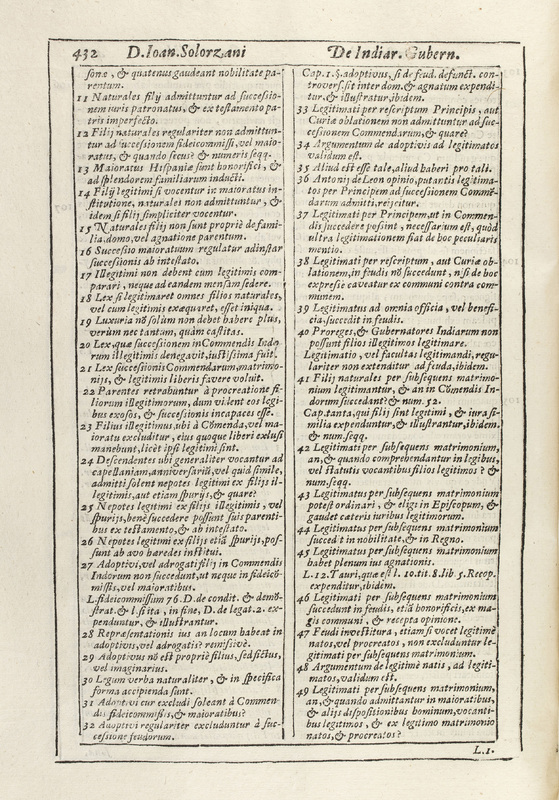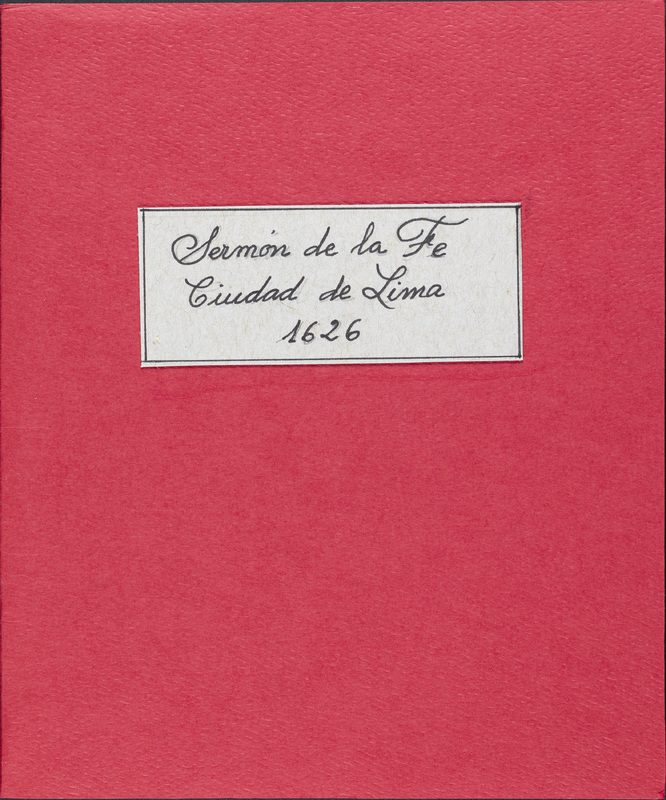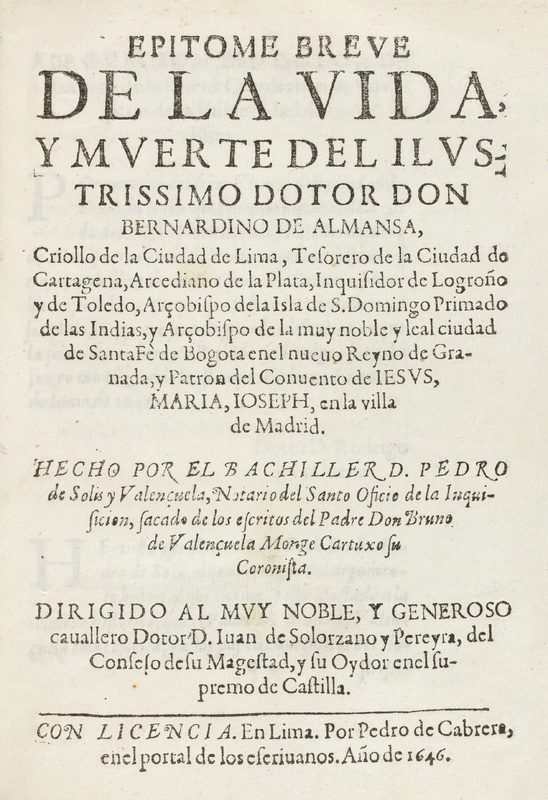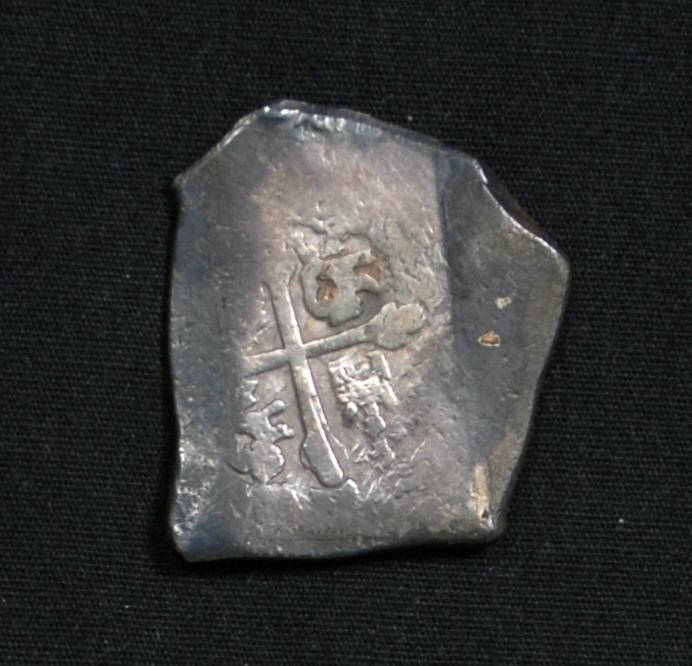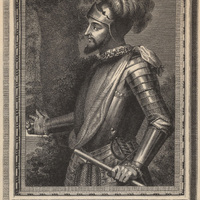Law, Religion, and Economy
The Viceroyalty of Perú, like the rest of the Spanish Empire, relied on an intricate system of laws called “The Laws of the Indies.” These laws regulated social, political, religious, and economic life in this region, and were particularly detailed in their attention to the hegemonic control and management of indigenous peoples. Scholars have devoted a lot of attention to these rules, which have been considered an early act of advocacy for human rights. In this section, we showcase some examples of books and pamphlets that helped to sustain these complex and changing set of rules in the Viceroyalty of Perú.
As a Catholic Monarchy, religion in the Spanish Empire was a central feature of daily life, cutting across classes and territories. Religion, and the expansion of the Christian faith to indigenous peoples was the leading justification for Spanish colonization. Bernardino de Almansa Carrión’s biography from 1646 chronicles the life of this Lima native that became Bishop of Ugento in 1619 (consecrated by Juan Bravo de Lagunas, relative of the Counts of Montemar), and Archbishop of Santo Domingo (1629-1631) and of Santa Fé de Bogotá (1631-1633). In Disputationem de Indiarum iure (1629-1639), Juan de Solórzano y Pereira skillfully elaborates on the Laws of the Indies, after serving for years as Oidor (Judge) in the Audiencia de Lima (Superior Court of Lima). He is considered one of Spain’s most prominent Early Modern jurists. Undoubtedly, the extraction of precious metals from the American colonies was paramount for the Spanish imperial enterprise.
